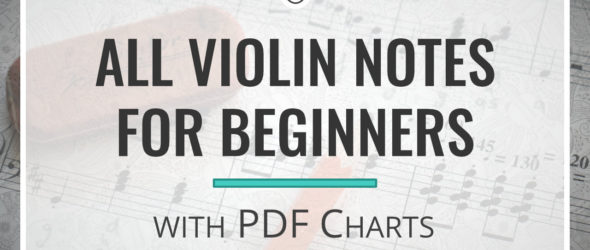Read on to check out my easy guide on all violin notes for beginners!
When you start learning to play the violin, or any instrument for that matter, you will also want to practice how to read music. After all, being able to read the music you are playing not only allows you to play the music, but it can give you a better understanding of it as well. The separate parts of a familiar piece will begin to work in a complex unity.
Before you learn how to play pieces, you have to know how to play individual notes on the violin. Therefore, if you are wondering what notes are on each string of a violin, which finger to use and where to place it to play those notes, and how to easily recognize it in the sheet music, then this article is just for you! Moreover, you can download PDF charts which will help you memorize it all.
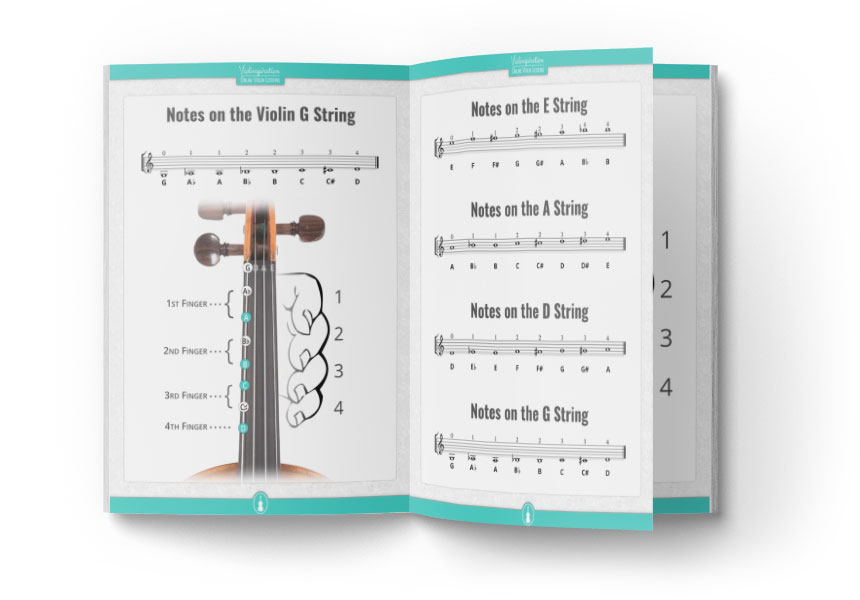
Get your free Fingering Charts
of All Violin Notes
What are Violin Strings Called?
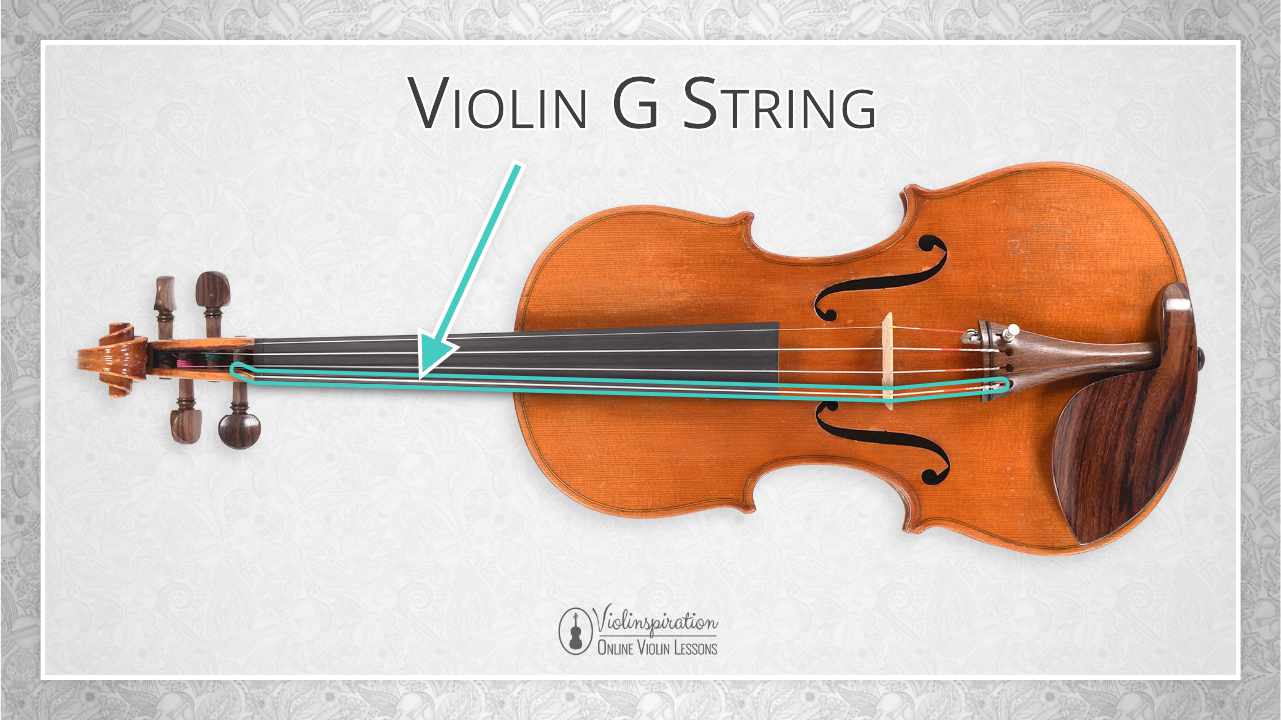
The violin has four strings that are tuned in 5ths. From right to left, the string names are G (G3), D (D4), A (A4), E (E5). The E string is the thinnest string that is highest in pitch, while the G string is the thickest string and is lowest in pitch.
In this video I play all the notes in first position and show you where they are on the staff:
What are All the Violin Notes?
There are twelve notes on a violin: A, A#, B, C, C#, D, D#, E, F, F#, G, G#. The lowest note on the violin is a G3 and the highest note on the violin is an A7.
On each string, there are 8 different notes that you can play in first position.
First, you can play the open string.
Then, there are 2 notes that you can play with your first finger.
The next two notes are played with the second finger.
The next two notes are played with the third finger.
The last note on each string is played with the fourth finger.
If you want a detailed description of the notes on each violin string, have a look at the separate lessons I created for each string:
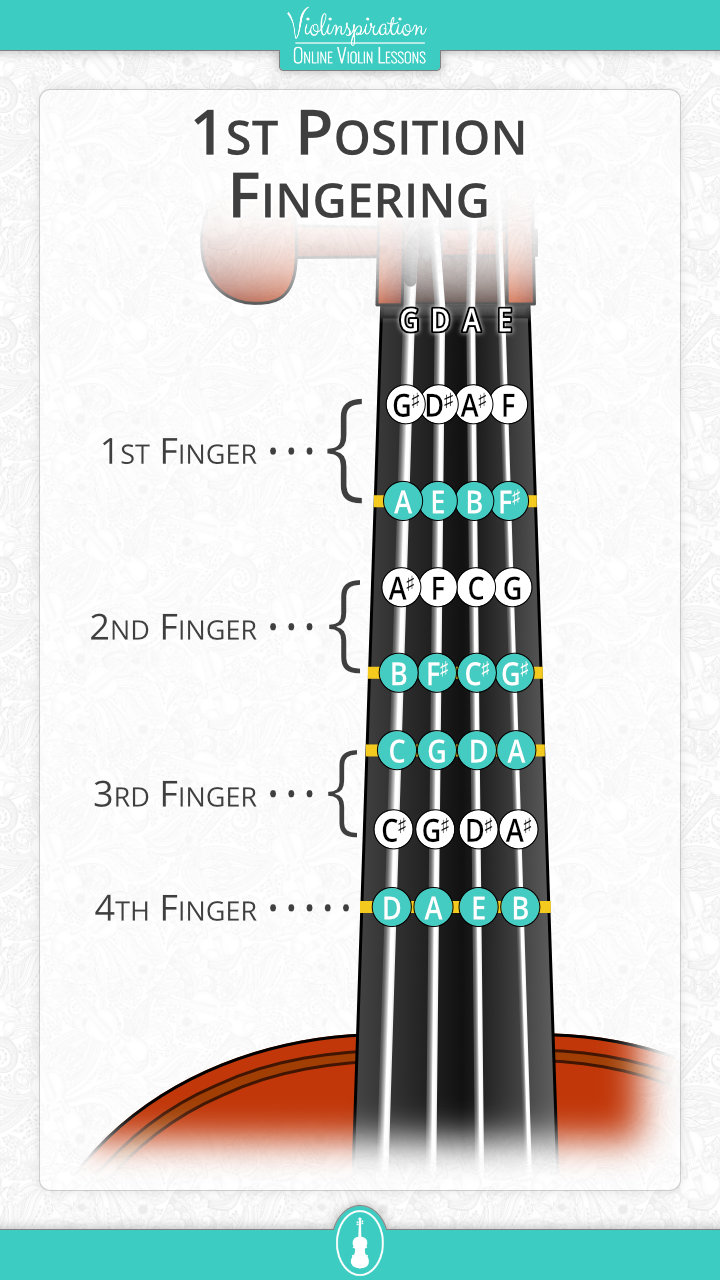
What is the First Violin Position?
Now you might wonder “what is first position”? I am glad you asked.
The first position is the “basic violin position”. The word position refers to the position of the left hand, while first refers to the “first position” on the fingerboard – which means: the position closest to the scroll.
This is what the first position looks like:
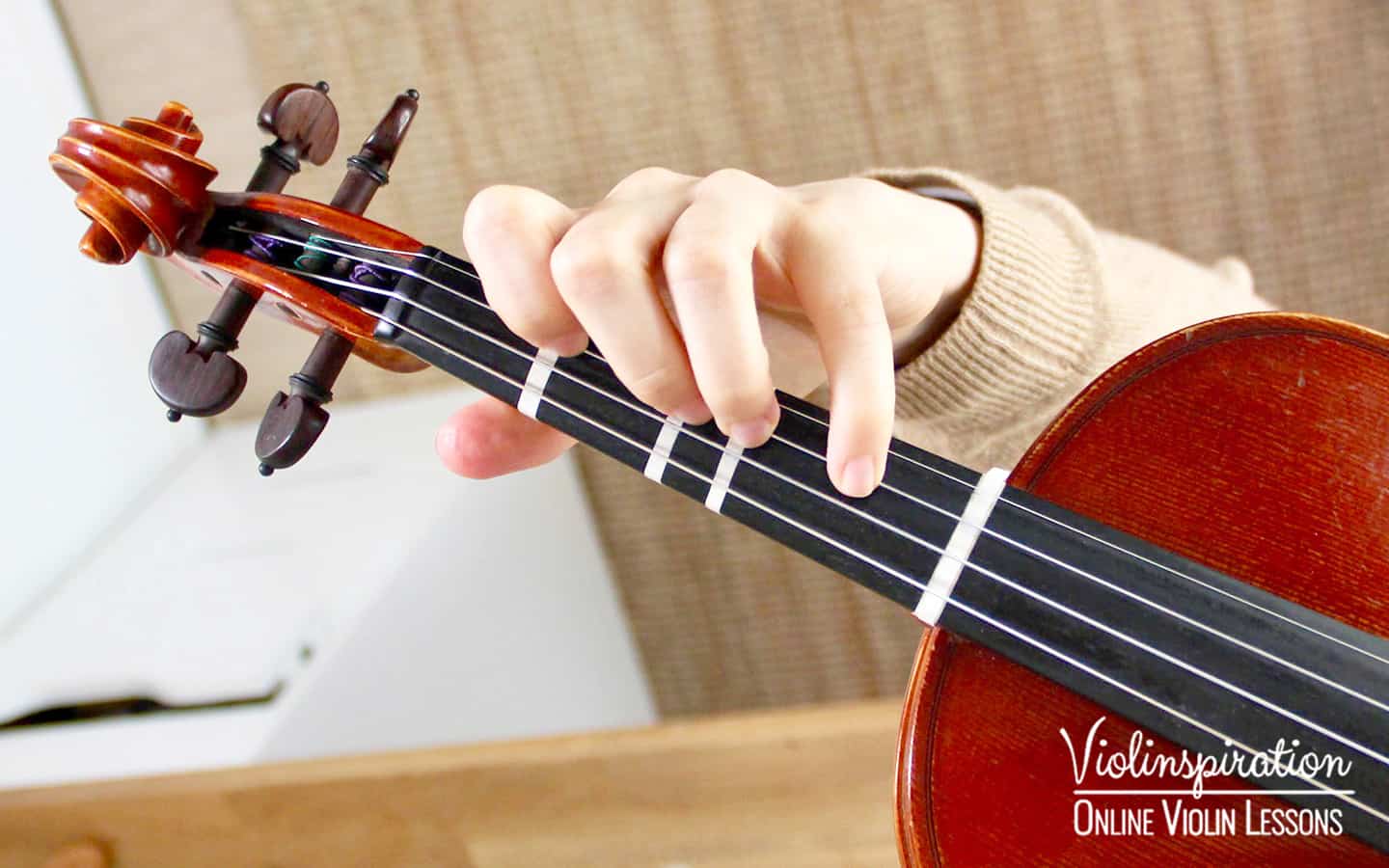
The higher you place your left hand on the fingerboard, the higher the position number is.
I am telling you this because it is important to realize that there are more than 8 notes on each string.
However, in our first year of violin playing, we usually only focus on learning the notes in first position.
After you have learned all notes in first position, you can continue to learn the notes in higher positions.
Optionally, you can just continue playing in first position your whole life. In many types of music, such as folk music, you only need to play in first position.
If you are an advancing violinist that would like to learn more about the notes in the higher positions on the violin, have a look at my post, The Ultimate Guide to the Violin Positions.
There you will learn where the violin positions are on the violin, how to shift to find them, what notes are in each, and a whole lot more. You can even get a downloadable PDF booklet for all positions that include the fingerings of each position.
If you are a beginner, however, stick to easy songs in first position until you have learned all the basics!
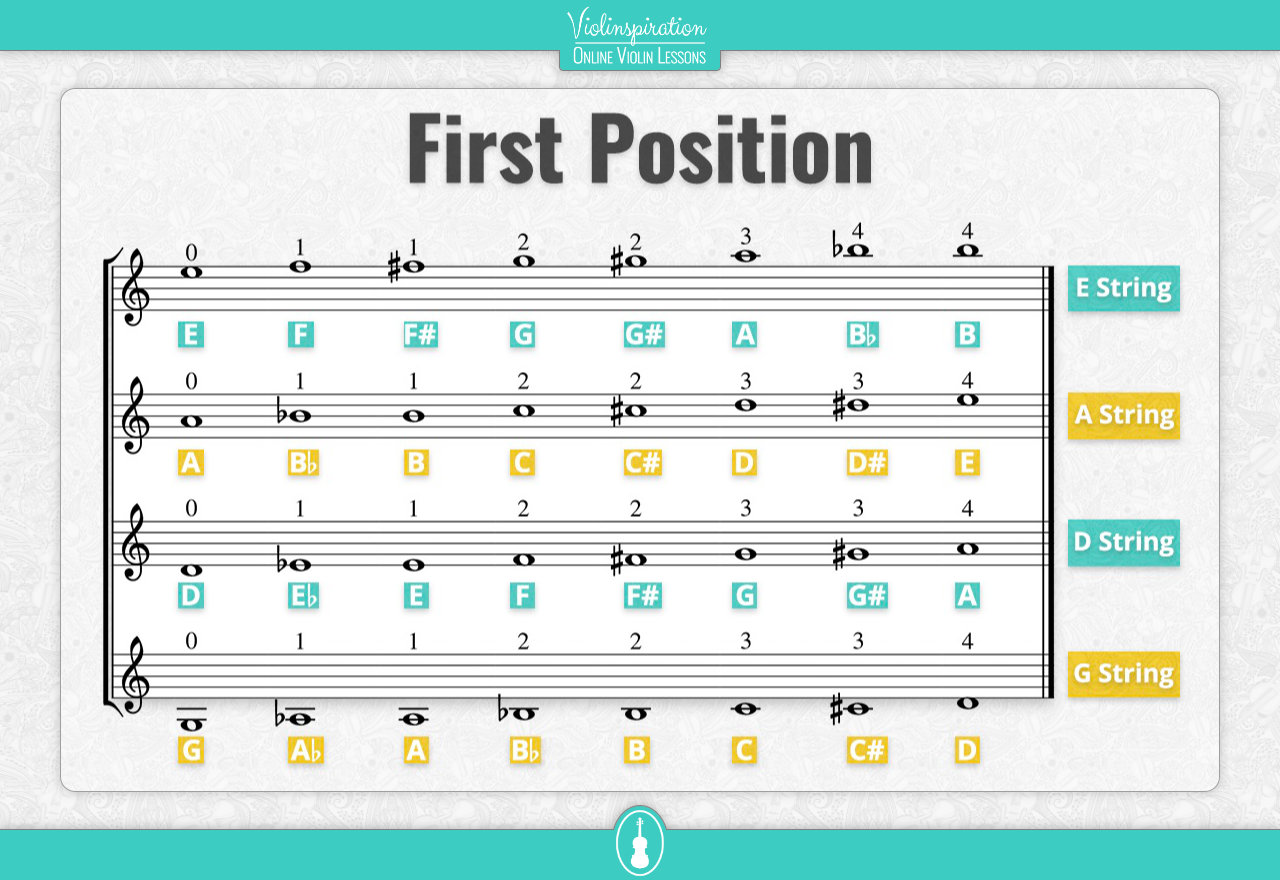
All the Violin Notes in Sheet Music
Now that you know where to locate all the violin notes, you might wonder what they look like in sheet music.
In the image above you can see an easy chart with an overview of all the notes you might encounter in violin sheet music and which notes on the violin they refer to.
Let’s Practice!
It’s time to practice what you have just learned.
Let’s have a look at this sheet music:
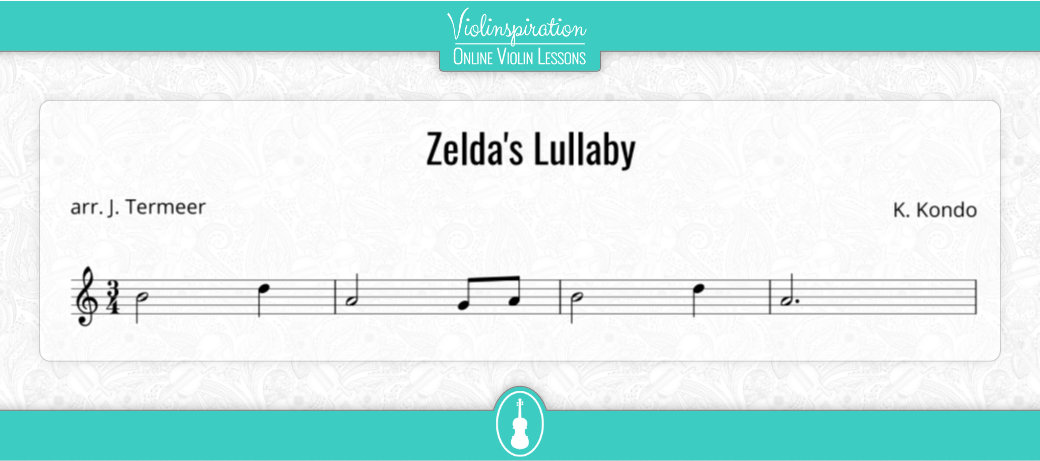
As we see, the first note is located on the middle line of the staff.
If we check the fingering chart, we can see that this is the first finger on the A string, otherwise referred to as the B.
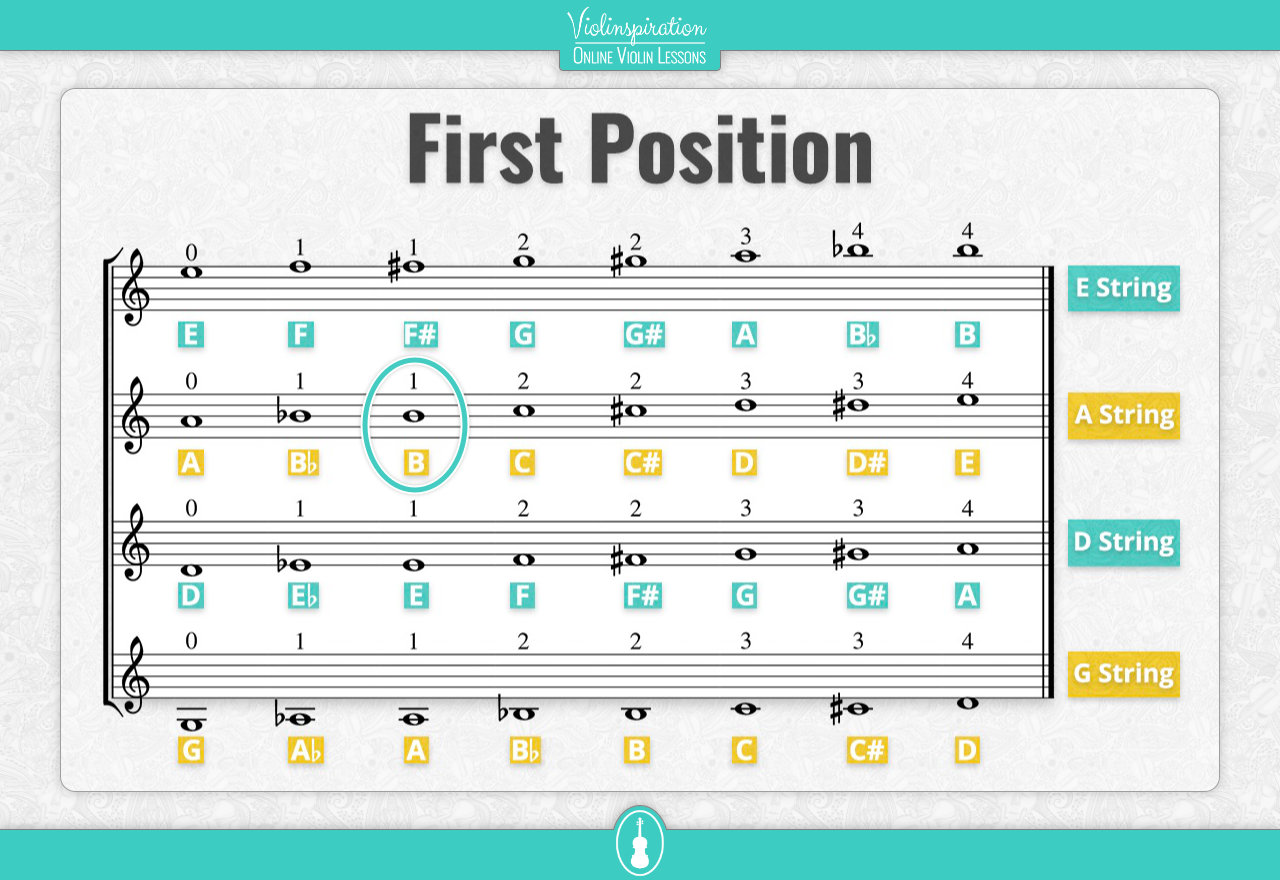
As we see in your first position chart, that means we have to place our first finger close to the nut on the violin.
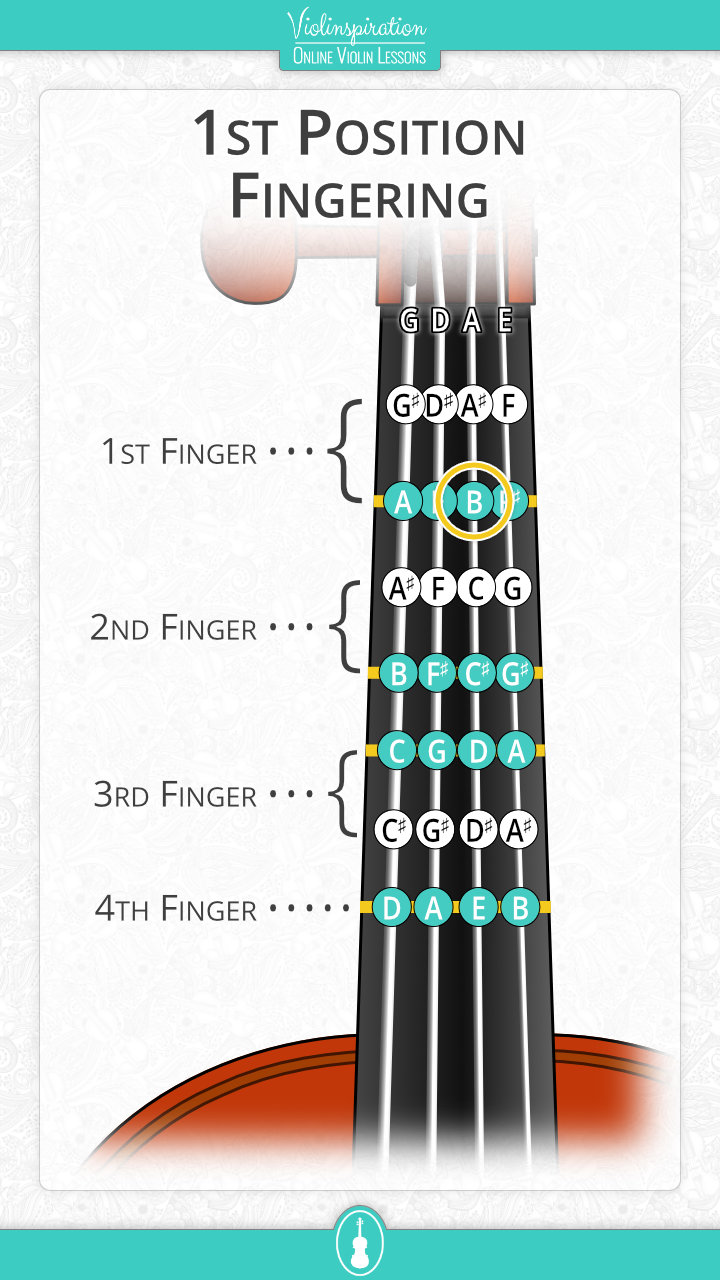
If you are unsure if you placed the finger in the correct position, you can always check it out with a violin tuner (here is a free online violin tuner).
Fingering Charts of All Violin Notes [PDF Download]
Here you can download a copy of my fingering charts of all the violin notes.

Get your free Fingering Charts
of All Violin Notes
The charts are created with the intention of making it easier for you to locate your fingers on the fingerboard. Especially for beginning violinists, it can sometimes seem overwhelming to remember all the notes in sheet music and where to locate them. Thankfully, it is not as hard as it seems – this chart will help you recognize every note and soon you’ll notice that you need the charts less each time you start practicing.
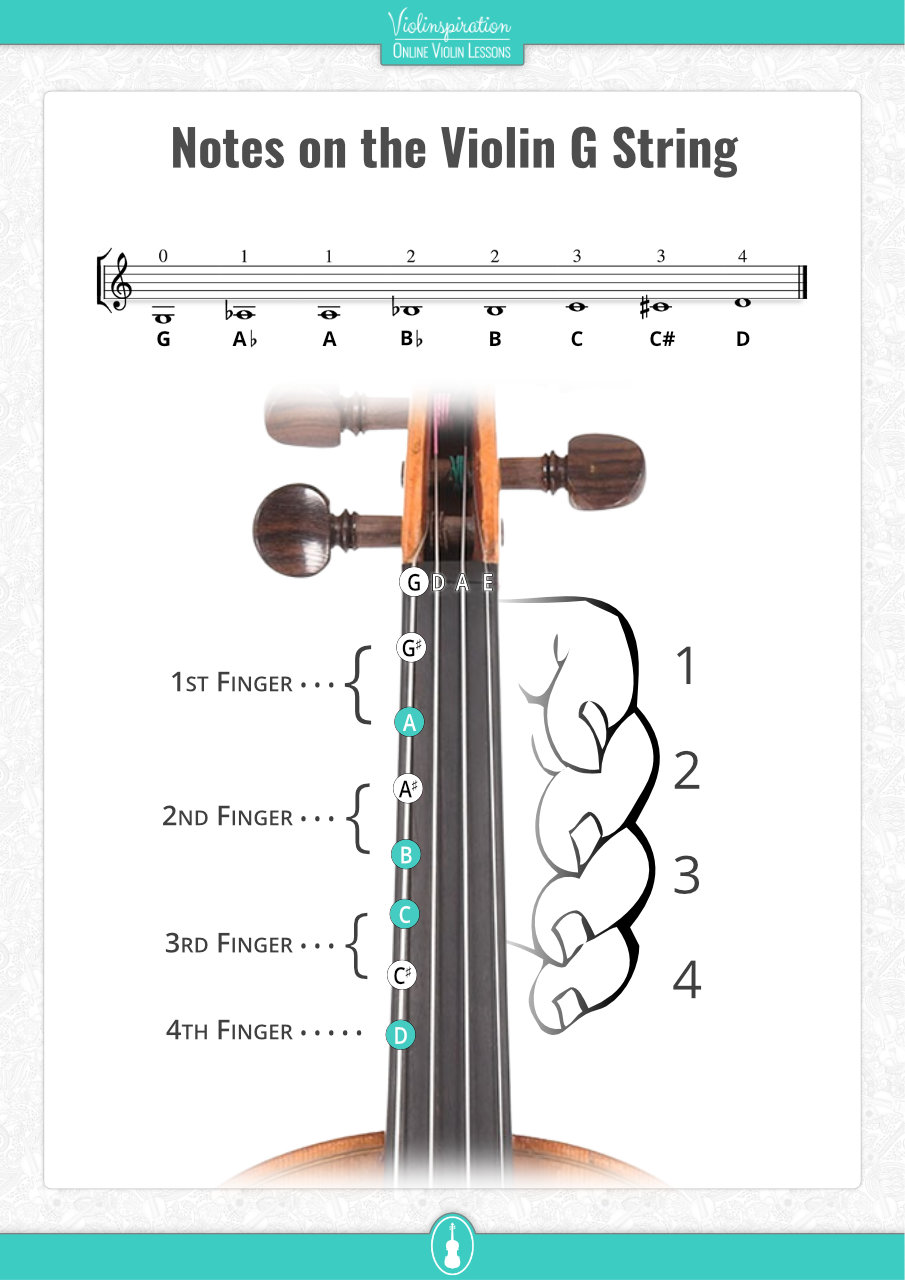
How to Use The Downloadable Violin Notes Chart
In the booklet there are several charts that show the notes on each violin string.
The top part of the chart shows you how you would read a note in sheet music. Also, I have added an image at the bottom of the chart to illustrate what violin fingerings you would use to play sheet music.
On the last page of the booklet, I added an overview of all the notes on each string.
As a result, you get a complete picture of how to both read and play the notes correctly.
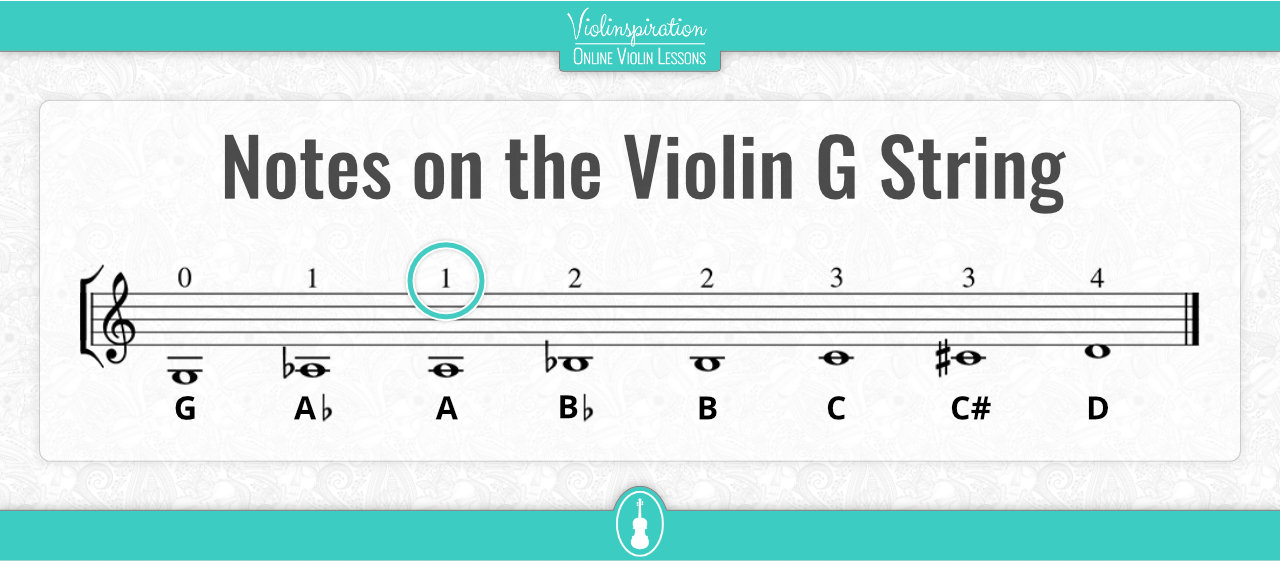
The Violin Fingerings
A simple and effective start for beginner violinists to practice reading sheet music is by learning violin fingering. Specifically, learning to associate which finger to place when making each note. This takes time.
On the chart, you can see there are numbers above the staff to illustrate the correct playing finger (fingering) for the corresponding note written on the staff.
A violinist has to memorize where to place their finger on the fingerboard. To help with this, beginner violin students put tape on their violin in the correct place to play the proper pitch and learn violin fingerings.
In this video I explain how to make a your own fingerboard tapes:
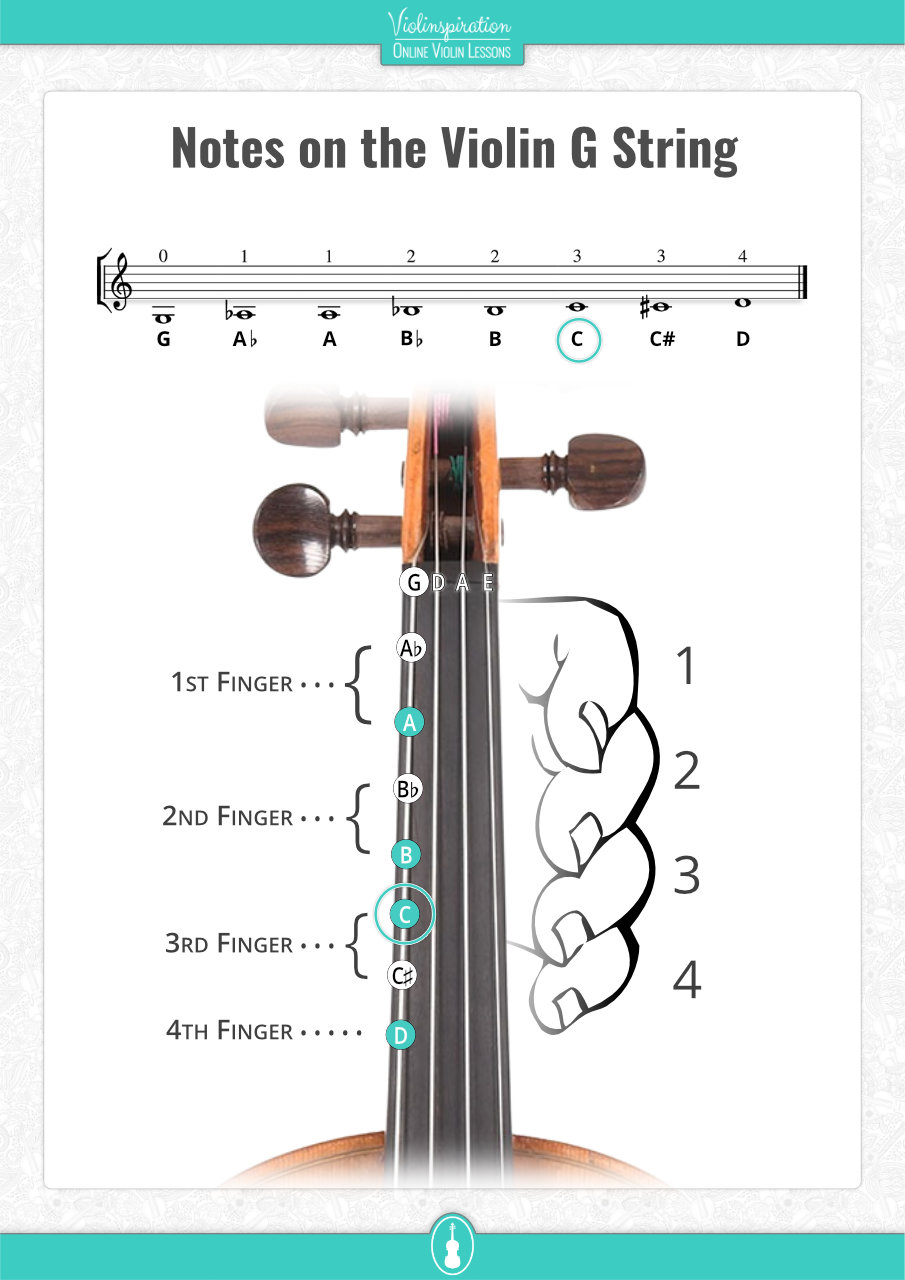
The Note Names
The letters below the staff are the names of the notes on the G string. They correspond to what is written on the staff right above them.
The bottom half of the chart illustrates where the notes are located on the fingerboard, and what finger position is used to play each of them. That way you can learn which finger placement each note corresponds to.
Conclusion
Learning to read music, as well as knowing the notes on the violin and the violin fingering, are part of your progression as a violin player. It will make learning new pieces easier and more enjoyable for you.
The downloadable PDF chart of all violin notes is the first step to get you started, and next you can pick a fun piece to play!

Get your free Fingering Charts
of All Violin Notes
